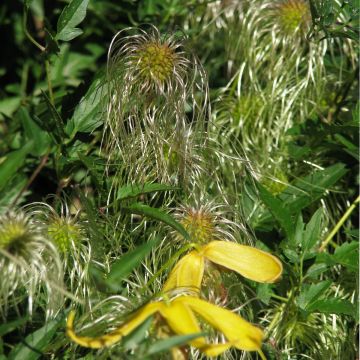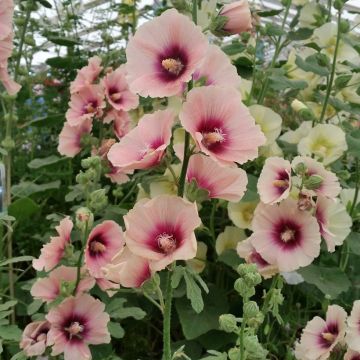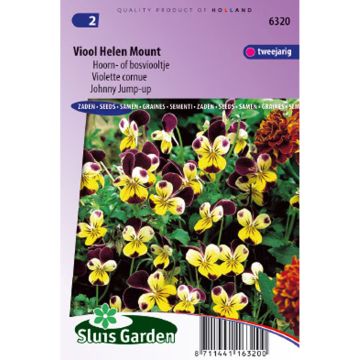

Viola Rose Shades - Swiss Garden Pansy Seeds
Viola Rose Shades - Swiss Garden Pansy Seeds
Viola x wittrockiana Rose Shades
Pansy, Swiss Giant Pansy, Garden Pansy, Violet
The bag doesn't match my order at all and the instructions are not in French. The delivery time of 15 days is a bit long, and it shouldn't be marked as available for purchase when it's not. Very, very disappointed.
Evelyne M., 20/08/2018
This plant carries a 6 months recovery warranty
More information
We guarantee the quality of our plants for a full growing cycle, and will replace at our expense any plant that fails to recover under normal climatic and planting conditions.
Seed-only orders are dispatched by sealed envelope. The delivery charge for seed-only orders is €3.90.
Does this plant fit my garden?
Set up your Plantfit profile →
Description
Viola hybrida Rose Shades is a perennial that is often grown as a biennial or even an annual. This compact, bushy variety produces an abundance of flowers in delicious rose shades. Each flower features a bright, golden yellow eye, surrounded by fine, dark whiskers and exudes a delicate fragrance. Ideal for decorating borders and spring or summer window boxes, this pansy is easy to sow and easy to grow in humus-rich soil, in the sun or in partial shade.
Garden pansies, sometimes referred to as the Swiss Giant Pansy, are actually hybrids which are grouped together in the Viola x wittrockiana group. They belong to the family Violaceae and are usually grown as annuals or biennials, although they are theoretically perennial, even if short-lived. The variety 'Rose Shades' is a compact, branched plant that forms dense, slightly spreading clumps measuring 20 cm high and 30 cm wide. It blooms from late winter to late spring, or from late spring to late summer, depending on the date of sowing. The 'Rose Shades' pansies bear slightly fragrant, large, open flowers in various shades of rose with luminous white blotches at the base of their petals. The bright yellow centre is surrounded by fine dark lines, also known as 'whiskers', giving the plant a very lively appearance. The medium green leaves are elliptical and largely crenate.
If you like having it in the garden, you will appreciate it most in a window box sitting on a window sill, where you can have it right under your nose without having to venture out into the cold weather. Combine with primroses, wallflower, grape hyacinth, common daisies... and even with ornamental grasses such as the graphic Japanese sedge for a very modern looking setting.
Pansy petals are edible and their colours will bring a touch of originality to your salads and pastries. For this use, just grow them as you would your vegetables, in the most natural way possible.
Report an error about the product description
Flowering
Foliage
Plant habit
Botanical data
Viola
x wittrockiana
Rose Shades
Violaceae
Pansy, Swiss Giant Pansy, Garden Pansy, Violet
Cultivar or hybrid
Other Thompson and Morgan seeds
Planting and care
Calendar : Sow pansies from February to April for summer flowering or from June to August for flowering the following spring.
Bury the seeds to a depth of 1.5 mm, in a tray filled with good seed starting soil. Cover, for example with a sheet of newspaper, since darkness is beneficial to germination. Keep at a temperature of 15 to 18° while keeping the soil moist. Germination takes between 14 and 21 days. Beware of excessively high temperatures which prevent the seedlings from emerging.
When the young plants are sufficiently developed to be handled, prick out into pots and let them grow whilst adapting them progressively to outside conditions over a period of 15 days. Plant your pansies out in the sun or in partial shade in the garden, taking care to leave 25 to 30 cm distance between each plant.
For late winter/early spring seedlings, wait for all risk of frost to pass before planting out.
Sowing period
Intended location
-
, onOrder confirmed
Reply from on Promesse de fleurs
Flower seeds
Haven't found what you were looking for?
Hardiness is the lowest winter temperature a plant can endure without suffering serious damage or even dying. However, hardiness is affected by location (a sheltered area, such as a patio), protection (winter cover) and soil type (hardiness is improved by well-drained soil).

Photo Sharing Terms & Conditions
In order to encourage gardeners to interact and share their experiences, Promesse de fleurs offers various media enabling content to be uploaded onto its Site - in particular via the ‘Photo sharing’ module.
The User agrees to refrain from:
- Posting any content that is illegal, prejudicial, insulting, racist, inciteful to hatred, revisionist, contrary to public decency, that infringes on privacy or on the privacy rights of third parties, in particular the publicity rights of persons and goods, intellectual property rights, or the right to privacy.
- Submitting content on behalf of a third party;
- Impersonate the identity of a third party and/or publish any personal information about a third party;
In general, the User undertakes to refrain from any unethical behaviour.
All Content (in particular text, comments, files, images, photos, videos, creative works, etc.), which may be subject to property or intellectual property rights, image or other private rights, shall remain the property of the User, subject to the limited rights granted by the terms of the licence granted by Promesse de fleurs as stated below. Users are at liberty to publish or not to publish such Content on the Site, notably via the ‘Photo Sharing’ facility, and accept that this Content shall be made public and freely accessible, notably on the Internet.
Users further acknowledge, undertake to have ,and guarantee that they hold all necessary rights and permissions to publish such material on the Site, in particular with regard to the legislation in force pertaining to any privacy, property, intellectual property, image, or contractual rights, or rights of any other nature. By publishing such Content on the Site, Users acknowledge accepting full liability as publishers of the Content within the meaning of the law, and grant Promesse de fleurs, free of charge, an inclusive, worldwide licence for the said Content for the entire duration of its publication, including all reproduction, representation, up/downloading, displaying, performing, transmission, and storage rights.
Users also grant permission for their name to be linked to the Content and accept that this link may not always be made available.
By engaging in posting material, Users consent to their Content becoming automatically accessible on the Internet, in particular on other sites and/or blogs and/or web pages of the Promesse de fleurs site, including in particular social pages and the Promesse de fleurs catalogue.
Users may secure the removal of entrusted content free of charge by issuing a simple request via our contact form.
The flowering period indicated on our website applies to countries and regions located in USDA zone 8 (France, the United Kingdom, Ireland, the Netherlands, etc.)
It will vary according to where you live:
- In zones 9 to 10 (Italy, Spain, Greece, etc.), flowering will occur about 2 to 4 weeks earlier.
- In zones 6 to 7 (Germany, Poland, Slovenia, and lower mountainous regions), flowering will be delayed by 2 to 3 weeks.
- In zone 5 (Central Europe, Scandinavia), blooming will be delayed by 3 to 5 weeks.
In temperate climates, pruning of spring-flowering shrubs (forsythia, spireas, etc.) should be done just after flowering.
Pruning of summer-flowering shrubs (Indian Lilac, Perovskia, etc.) can be done in winter or spring.
In cold regions as well as with frost-sensitive plants, avoid pruning too early when severe frosts may still occur.
The planting period indicated on our website applies to countries and regions located in USDA zone 8 (France, United Kingdom, Ireland, Netherlands).
It will vary according to where you live:
- In Mediterranean zones (Marseille, Madrid, Milan, etc.), autumn and winter are the best planting periods.
- In continental zones (Strasbourg, Munich, Vienna, etc.), delay planting by 2 to 3 weeks in spring and bring it forward by 2 to 4 weeks in autumn.
- In mountainous regions (the Alps, Pyrenees, Carpathians, etc.), it is best to plant in late spring (May-June) or late summer (August-September).
The harvesting period indicated on our website applies to countries and regions in USDA zone 8 (France, England, Ireland, the Netherlands).
In colder areas (Scandinavia, Poland, Austria...) fruit and vegetable harvests are likely to be delayed by 3-4 weeks.
In warmer areas (Italy, Spain, Greece, etc.), harvesting will probably take place earlier, depending on weather conditions.
The sowing periods indicated on our website apply to countries and regions within USDA Zone 8 (France, UK, Ireland, Netherlands).
In colder areas (Scandinavia, Poland, Austria...), delay any outdoor sowing by 3-4 weeks, or sow under glass.
In warmer climes (Italy, Spain, Greece, etc.), bring outdoor sowing forward by a few weeks.























































